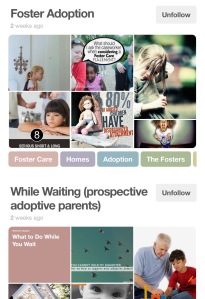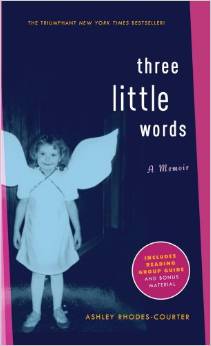
As you likely know, Pinterest is a social bookmarking website for saving, organizing and sharing things. Many, many people have already recognized its benefits for design, fashion, beauty, cooking and other lifestyle topics. But, it can have some wonderful benefits for couples and singles who are hoping to adopt ~ or in the middle of that process, too.
We have been building our agency Pinterest page for a long while now. And, we’ve proudly amassed a wealth of resources. In fact, our Pinterest boards have made it hard to keep this “blog” alive — We’ve come to notice that so much important content has already been written and it’s written so well, that, well… why would CHI write it again?
Please accept our invitation visit and “follow” our Pinterest page: Chrysalis House. You will then have access to a resource that we have designed to support any and every family, including those who are -or- aren’t clients of our adoption agency.

We have reviewed a wide collection of topics and amassed over 800 pins all nicely divided into boards on adoption and issue specific topics such as: anger management, special needs, chores, developmental milestones, safety strategies, foster/domestic/inter-country adoption, bonding and attachment, nutrition, discipline, transracial adoption and …probably just about everything in between, too. We’ve created boards on: what to do while you are waiting (prospective adoptive parents), how to coach adoptive relatives, how to apply for adoption grants and even how to get ready for back-to-school.
Our Pinterest boards are there for you and they. are. free. Please access our Pinterest pages whenever it can be of use to you. Simply put, that’s why it’s there. And, if you see a topic that we’ve missed, we hope you’ll make a recommendation for us to research it too! (Just email it to stacy@chrysalishouse.com & she’ll humbly accept that challenge!)
But, there’s another reason why we bring up Pinterest… This social platform can be part of any waiting parent’s adoption networking strategy. It’s popular and has many millions of visitors ~ which is a fantastic audience. 68 percent of Pinterest visitors are women and 70.9% are between the ages of 17 to 44– which includes the demographic you want to reach and connect with, when you are prospective adoptive parents seeking a domestic adoption. According to a report, Pinterest drives more referral traffic than Google+, LinkedIn and YouTube combined and is now one of the top 10 social networking websites.
How waiting adoptive parents can use Pinterest:
It’s easy to use and once you’ve joined, sharing, following and “liking” others couldn’t be easier. Just create a board and start pinning. Conveying “who” you are with words can be a challenge. Pinterest helps you show the “real” you when it comes to telling an authentic story. Because Pinterest reveals “who” you are through photos and images that you personally identify with, it gives you the chance to connect with prospective birth parents on a visceral level.
For waiting parents, beyond research on “what you can expect while you’re expecting” –you can also use Pinterest to showcase your personality and share many bits and pieces of your life that didn’t make it into your profile. Your Pinterest page can show additional facets to your family like: hobbies, traveling plans, your love for the garden, recipes you’d like to try, charities you support, and can ultimately reflect …how you hope to parent that child that you hope to adopt. Consider loading your families Adoptive Profile to your Pinterest page and consider Pinterest to be another resource for connection(s). Finally, for anyone who is going through the sometimes arduous (but eventually rewarding) process that is adoption, Pinterest’s beauty, messages of hope, and celebration of the everyday can be a daily pick-me-up.
Now, isn’t that (P)interesting? (wink.)


